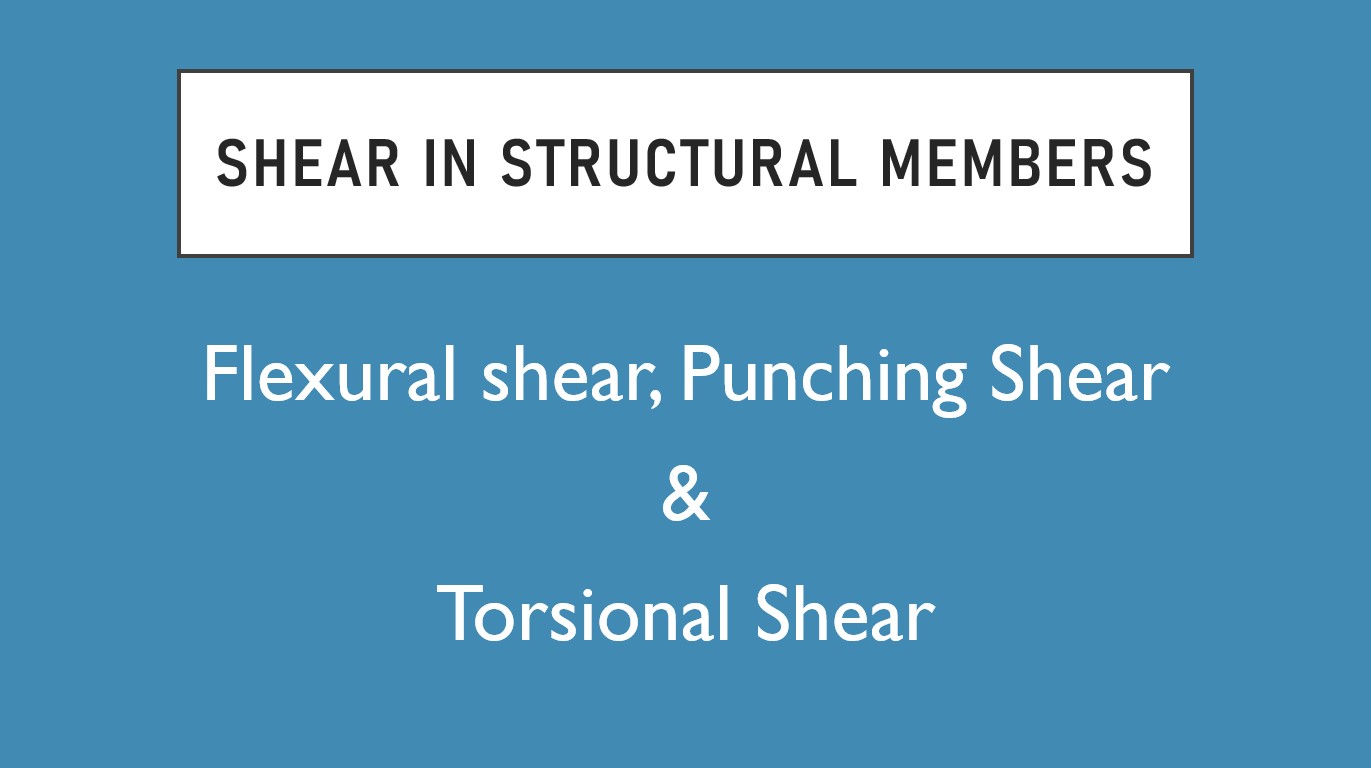The section of a structural member may be subjected to shear force due to flexure, punching or torsion. Accordingly, the shear may be flexural shear, punching shear or torsional shear.
- Flexural shear: The shear associated with change of bending moment along the span is known as flexural shear. The beams are usually subjected to flexural shear. For beams, the flexural shear is commonly referred as ‘shear’.
- Punching shear: The shear associated with the possibility of punching a thin member by a concentrated wall load, a beam-less floor slab supported directly by columns (called flat slab) or a footing slab carrying a concentrated column load are subjected to punching shear. For the members subjected to both the above types shear, the flexural shear is referred to as one-way shear whereas the punching shear is referred to as two-way shear. A footing slab carrying concentrated column load is subjected to both these shears.
- Torsional shear: When a member is subjected to torsion, it is subjected to torsional shear. In RCC structures, the torsional shear is usually accompanied with flexural shear.
The beams are the line (uni-dimensional) elements and are usually subjected to flexural shear, and sometimes with torsional shear also. The slabs are the plate elements and usually subjected to flexural shear. However, sometimes they are subjected to all the types of shears as in case of restrained two-way slab and the flat slab.
The beams are classified as shallow and deep depending on the ratio of effective span ‘l’ to overall depth ‘D’, i.e., l/D ratio. Accordingly, the beams are classified as deep if;
l/D < 2, for simply supported beams.
l/D > 2.5, for continues beams.
Usually the shear failures if shallow RCC beams may not lead to immediate failure, however it considerably reduces its flexural strength and thus there is a state of impending shear failure. Hence the shear design is considered as limit state of collapse. If the shear failure take place before flexural failures, they are brittle and occur without warning. Hence the safety margins provided on design shear strength larger than that provided on design flexural strength. At failure loads, the flexural failure will take place prior to shear failure, the ductile failure of the beam is ensured.


